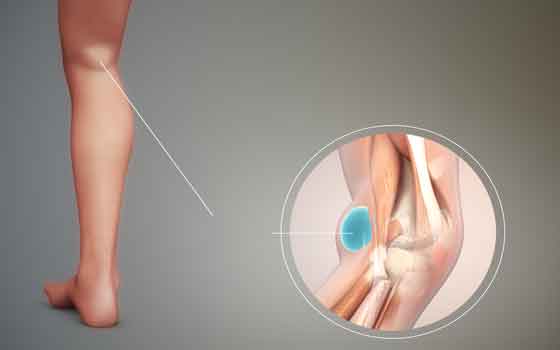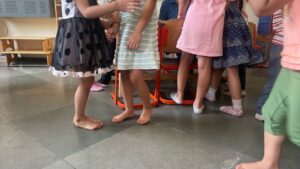bakers cyst and popliteal cyst
bakers cyst and popliteal cyst

A Baker’s cyst is a fluid-filled cyst that causes a bulge and a feeling of tightness behind your knee. The pain can get worse when patients fully flex or extend their knee or when they are active.
A Baker’s cyst, also called a popliteal cyst, is usually the result of a problem with knee joint, such as arthritis or a cartilage tear. Both conditions can cause knee to produce too much fluid, which can lead to a Baker’s cyst.
SYMPTOMS:-
- Swelling behind your knee, and sometimes in your leg
- Knee pain
- Stiffness and inability to fully flex the knee
- vague posterior pain
- swelling and a mass in the popliteal space.
Symptoms may be worse after you’ve been active or if you’ve been standing for a long time.
CAUSES:-
A lubricating fluid called synovial fluid helps leg swing smoothly and reduces friction between the moving parts of the knee.
But sometimes the knee produces too much synovial fluid, resulting in build up of fluid in an area on the back of the knee (popliteal bursa), causing a Baker’s cyst. This can happen because of:
- Inflammation of the knee joint, such as occurs with various types of arthritis
- A knee injury, such as a cartilage tear.
PHYSIOTHERAPY MANAGEMENT:-
An ICE massage of 15 minutes every 4-7 hours will reduce the inflammation. The treatment is based on the principles of R.I.C.E (rest, ice, compression, and elevation) followed by some muscleconditioning exercises.
A rehabilitation program can improve the control of the knee joint by range of motion exercises. It will increase the motion of the joint as well as increase flexibility. The physiotherapist will give a mobility, a hamstring stretching program and a concurrent quadriceps strengthening program that has to repeat several times a day. This will result in less pain at about 6-8 weeks.
Exercises to help with a Baker’s cyst-
1. Seated hamstring stretches
How to do it:
While seated, rest your heel on the floor with your knee straight.
Gently lean forward until you feel a stretch behind your knee and thigh.
Why it helps: This stretch can be used to improve knee extension if limited.
2. Heel slide
How to do it:
Lie on your back with knees straight.
Slide the affected heel toward your buttock as you bend your knee.
Hold a gentle stretch in this position and then return to original position
Why it helps: This exercise can be used to gently improve knee flexion if it is limited
3. Standing calf stretch
How to do it:
Start by standing close to a wall.
Step forward with one foot and keep both feet pointed toward the wall.
Keep the knee of your back leg straight.
Lean forward toward the wall and support yourself with your arms as you allow your front knee to bend until you feel a gentle stretch along the back of your straight leg.
Move closer or farther away from the wall to control the stretch of the back leg.
Why it helps: When you have a Baker’s cyst, the backside of the leg can be tight. This stretch will help release some of the tension in the lower leg.
4. Wall squat
How to do it:
Lean against a wall or a door, so that your feet are about a foot away from you.
Slide your body downward while keeping your back against the wall.
Hold for three seconds, then return back to an upright position.
Why it helps: Squats help to strengthen the quadriceps muscles, which supports the knee. Strength in the lower body is essential for managing a Baker’s cyst.
5. Side-stepping
How to do it:
Begin with a resistance band around your ankles and your knees slightly bent.
Keep your weight on your heels as you slowly take a step out to the side and allow the other leg to follow without losing tension in the band.
Why it helps: This exercise strengthens the gluteal muscles, which helps stabilize your hip and knee.
Treatment at Best Physiotherapy clinic in Dhakoli..
Blossom physiotherapy centre is one of the best physiotherapy and rehabilitation centre in Dhakoli. And is well equipped with ultra modular equipments. Dr Jyoti Gupta(MPT pediatrics) as well as certified yoga instructor , She completes her course from well known YOGA ALLIANCE INTERNATIONAL FNY STUDIO. She is the head of Blossom Physiotherapy centre. There is a huge team of qualified professionals who work as a team. They all are specialised in their respective fields and apply their valuable knowledge in recovery of patients.
They always works on root cause of the disease and work to treat accordingly.
So in the nutshell i will advise to visit the clinic and have excellence experience..
For more info visit www.blossoms physiotherapy.com



